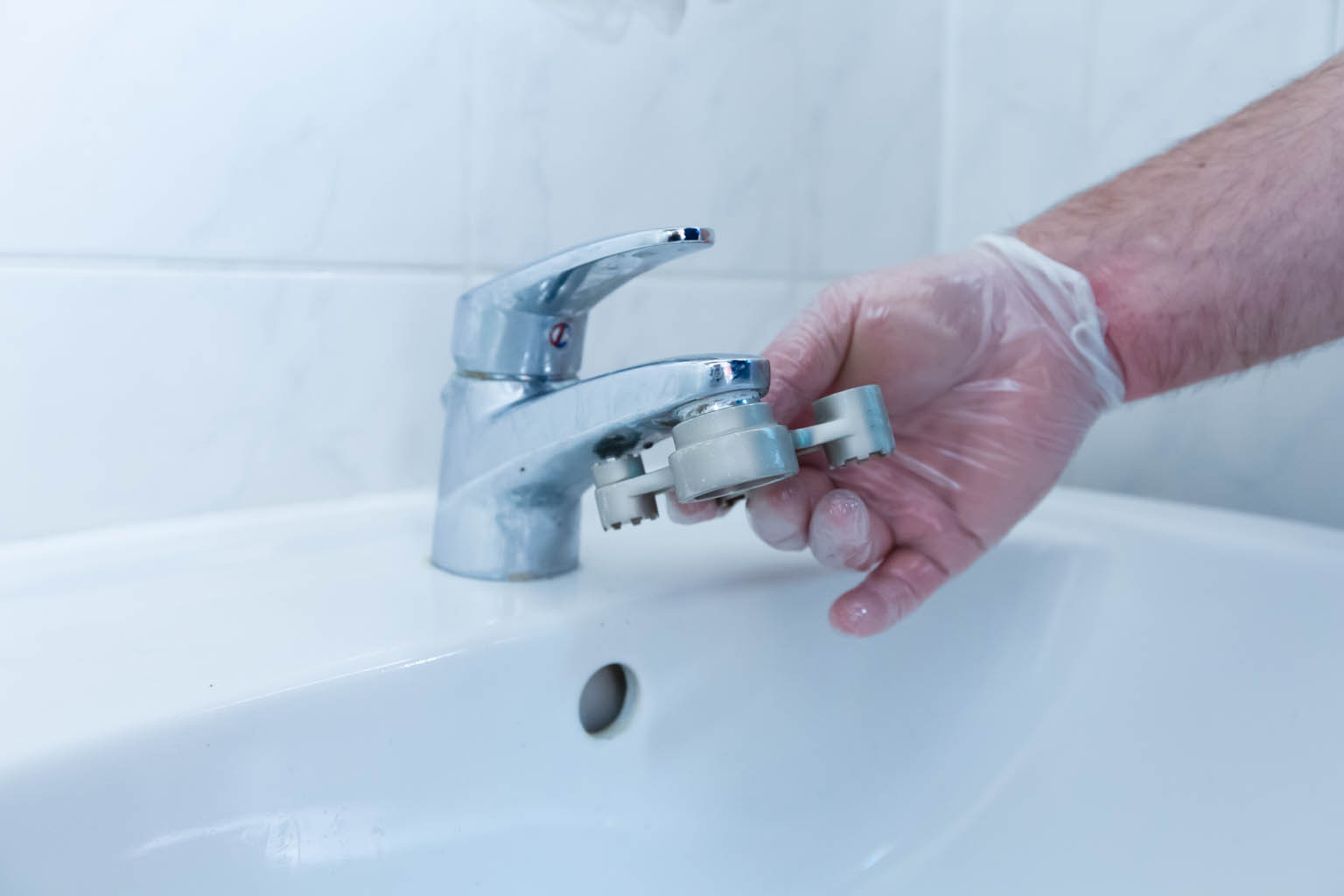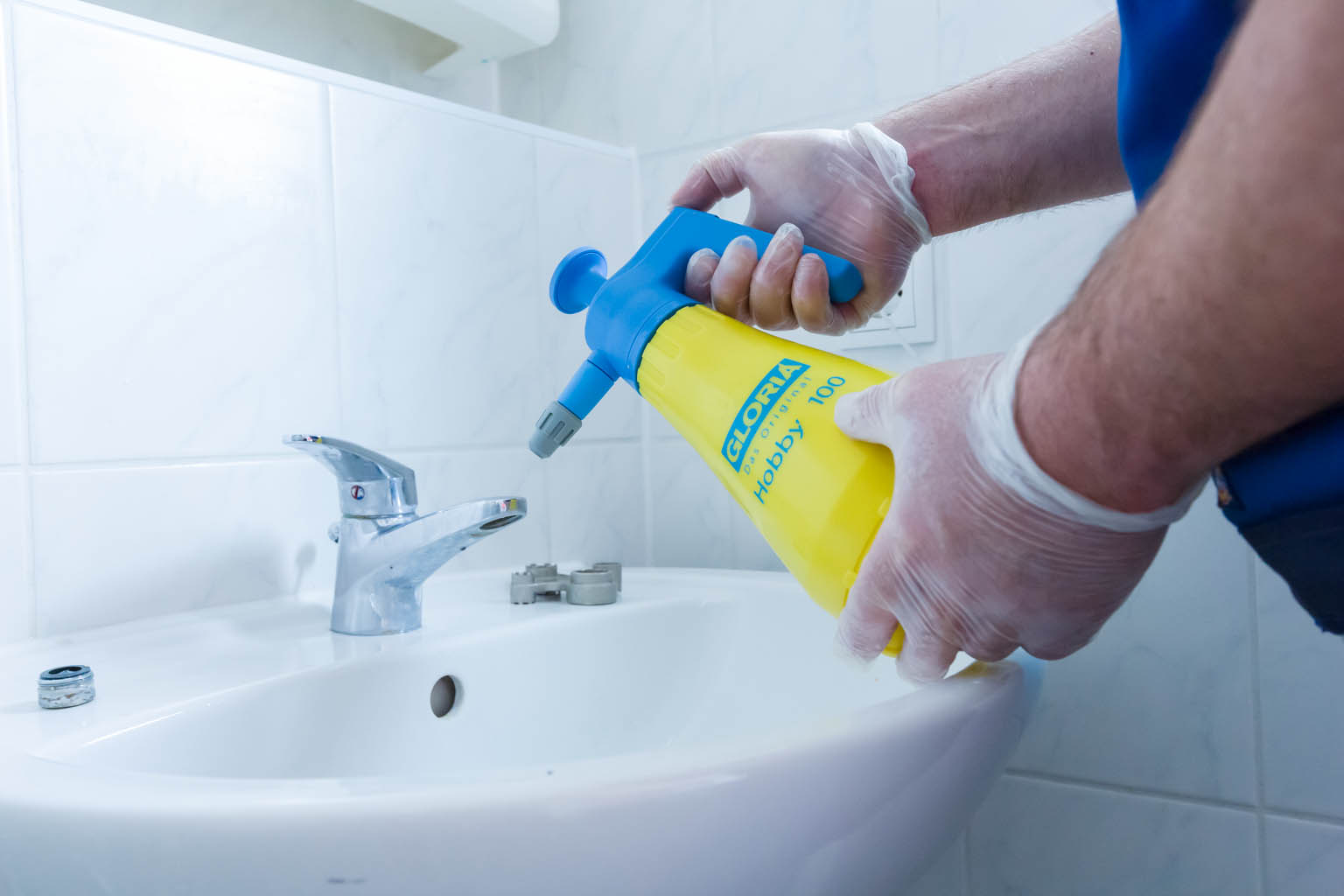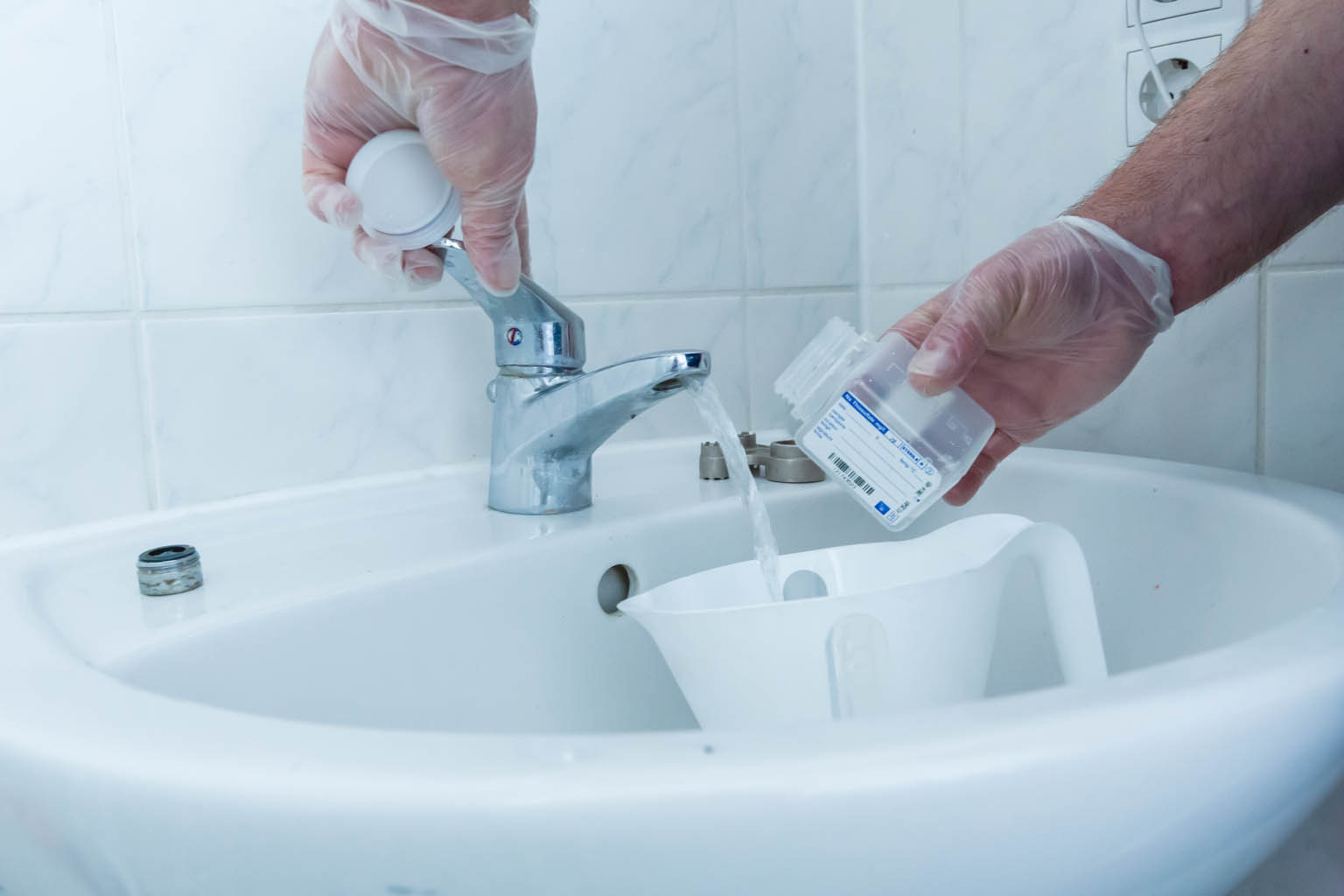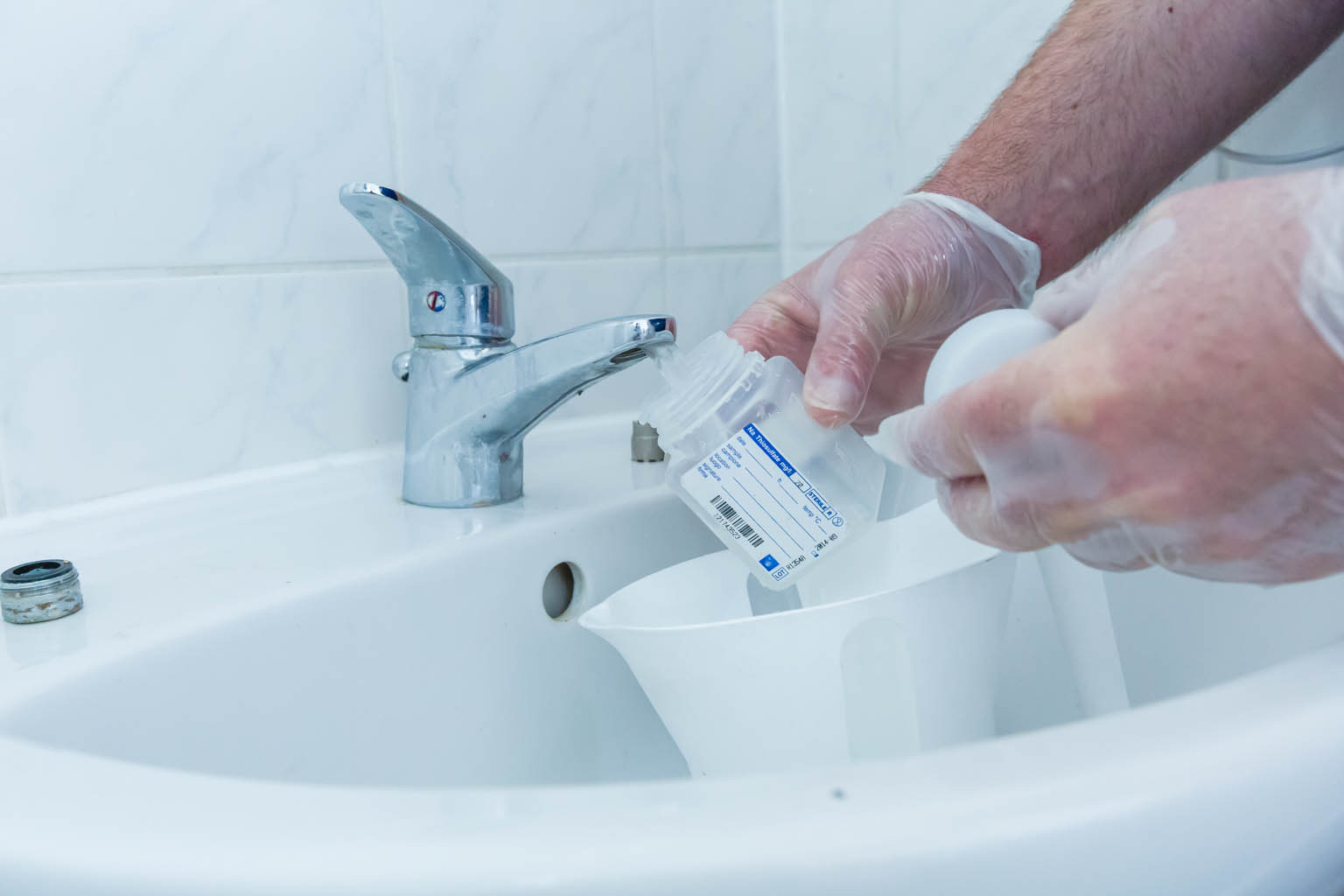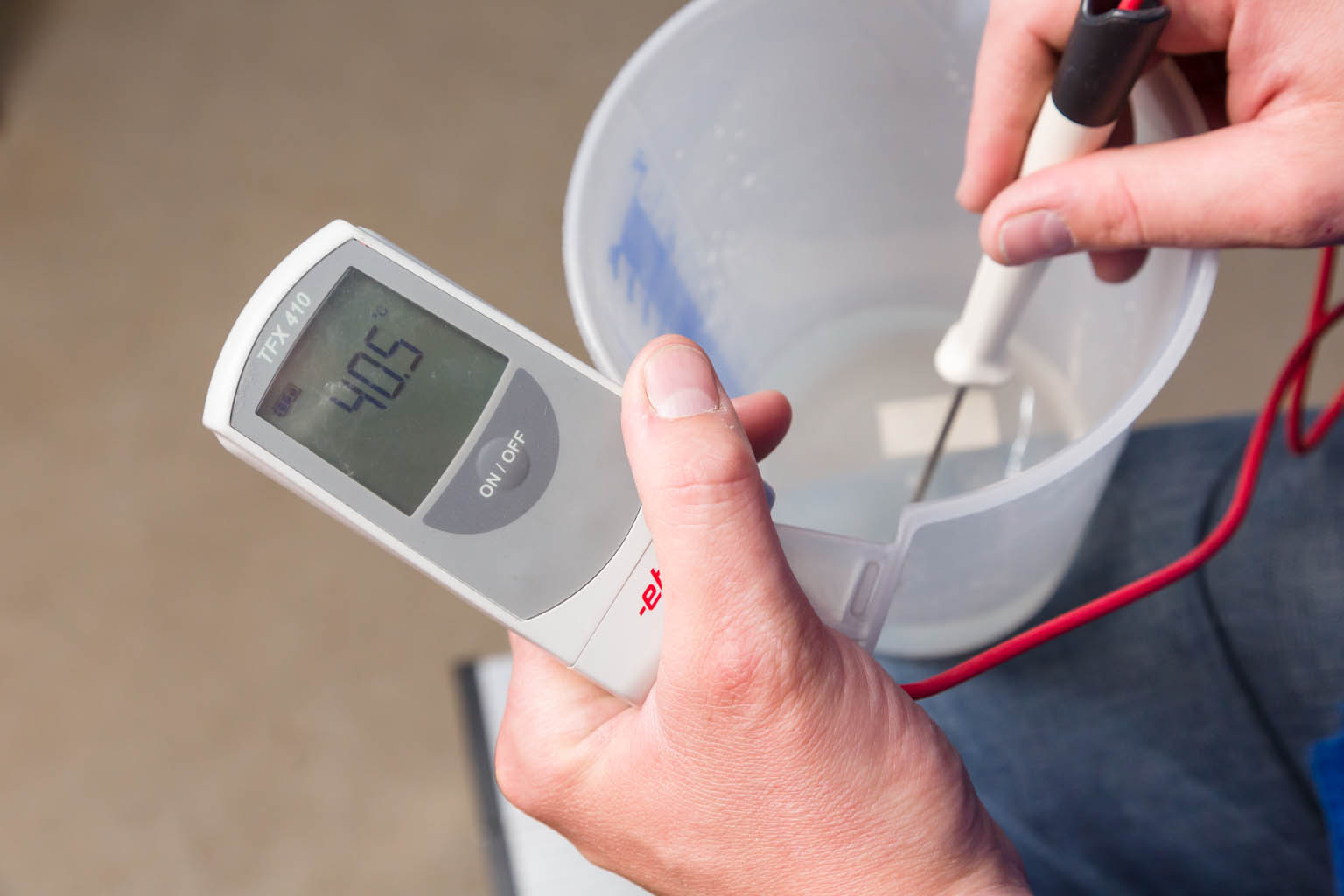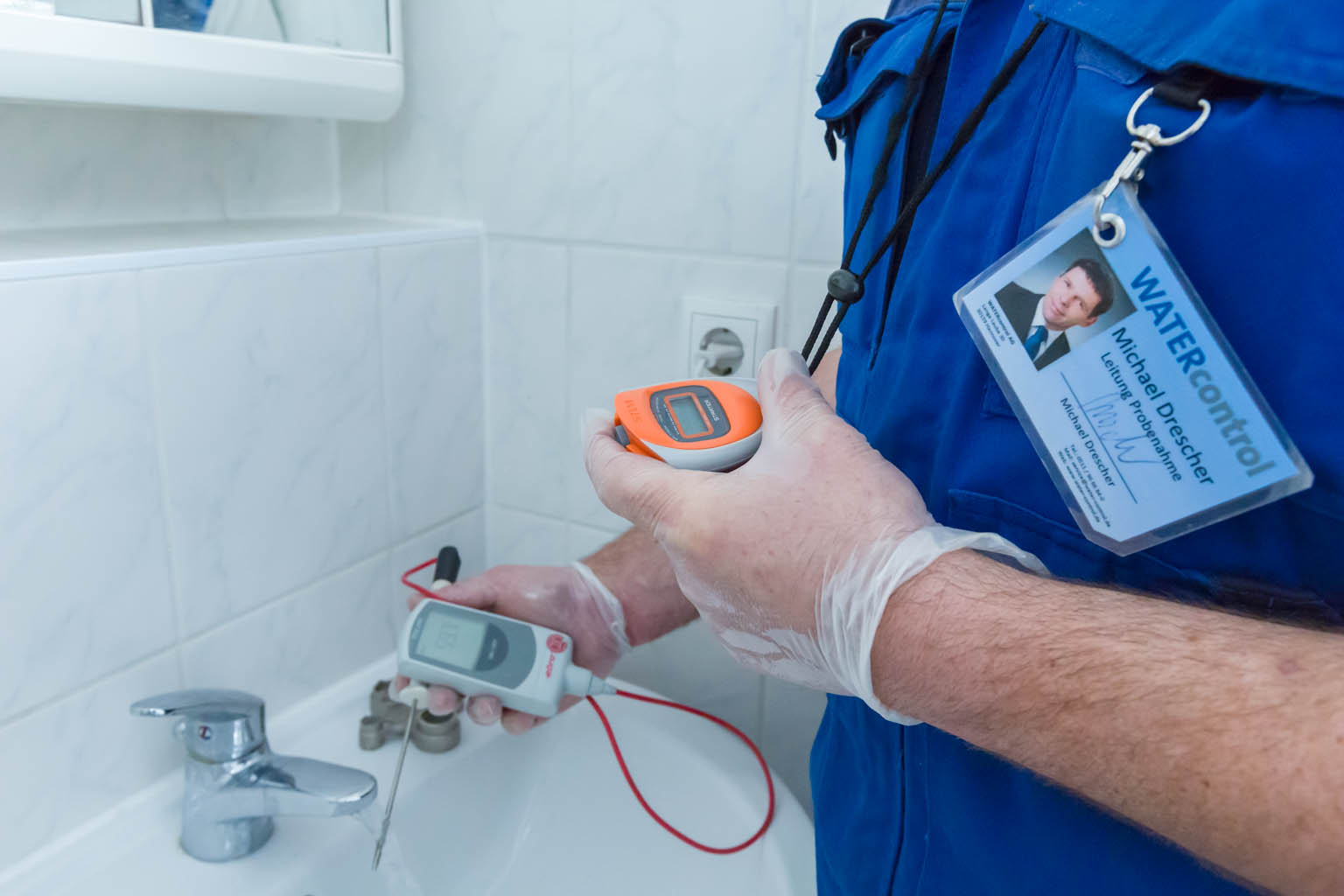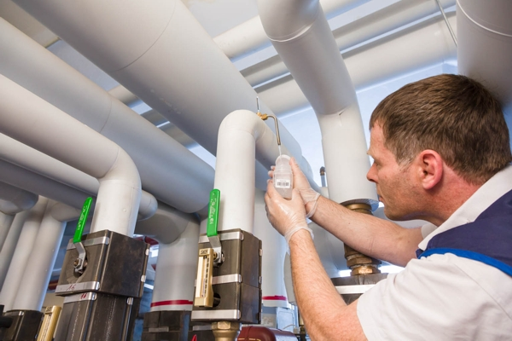 We organize the sampling from your drinking water installations according to the current state of the art. Each sample is clearly labeled and cannot be lost or mistaken until the test result is available. We work with internal and external samplers for sampling according to drinking water regulations and collaborate nationwide with accredited testing laboratories for water analysis. All samplers are trained in hygiene and sensory aspects and are integrated into our quality assurance system. We collect samples not only for systemic examination according to drinking water regulations but also for occupational safety, self-monitoring (HSSE, Safety First), fulfilling operator and traffic safety obligations (liability prevention & risk management), as well as for quality assurance purposes.
We organize the sampling from your drinking water installations according to the current state of the art. Each sample is clearly labeled and cannot be lost or mistaken until the test result is available. We work with internal and external samplers for sampling according to drinking water regulations and collaborate nationwide with accredited testing laboratories for water analysis. All samplers are trained in hygiene and sensory aspects and are integrated into our quality assurance system. We collect samples not only for systemic examination according to drinking water regulations but also for occupational safety, self-monitoring (HSSE, Safety First), fulfilling operator and traffic safety obligations (liability prevention & risk management), as well as for quality assurance purposes.
The essential basis for the sampling procedure itself is the DVGW (German Technical and Scientific Association for Gas and Water) guideline W 551. In addition, the DIN EN ISO 19458:2006 standard is applied, which regulates sampling for microbiological examinations and provides guidelines for the sampling technique to be used (Purpose b). We adhere to these guidelines.
The sampling tap needs to be thermally disinfected, either by flame sterilization or chemically, before water can be extracted. Flow regulators and other attached devices need to be removed beforehand. It is important that before the actual sampling, at least one liter of water should be flushed out, but no more than 3 liters. Therefore, a measuring cup should always be used. Gloves should be worn during the filling process, or at the very least, hands should be thoroughly washed, ideally disinfected, before handling the samples. Touching the inner rim of the lid should be avoided as much as possible. The temperatures during sampling and the onset of temperature stability should be measured and documented. In addition, we record the time it takes to reach a stable temperature.
During transport of the samples to the laboratory, the prescribed temperature range of 2 to 8 degrees Celsius for storage times is always maintained. This ensures that the water sample remains cool and fresh, minimizing the risk of contamination.
We exclusively work with certified personnel in your facilities. All field personnel are particularly adept in dealing with tenants and property owners. Indeed, samples are also taken from the topmost apartments of the building. Good manners and polite behavior are inherent in our approach and facilitate the work process.
The steps of the sampling procedure (Purpose b) include:
In addition to our core business of sampling for microbiological analysis purposes, we also collect samples for chemical analysis, particularly for heavy metals, using the so-called random grab sampling (Z-sample) and stratified stagnation sampling (S0, S1, S2 samples).

